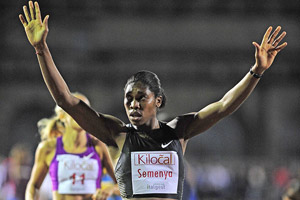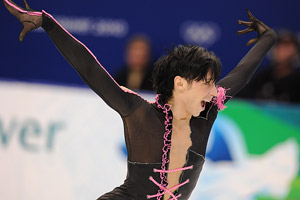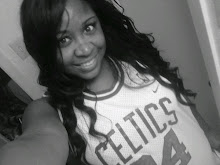Several times over the course of his Hall of Fame career, Cap Anson, a first baseman with the Chicago White Stockings, refused to play if the opposing team had black players. He carried this prejudice with him to his managerial career and his time as part owner of what is now the Chicago Cubs.
In his 1900 autobiography, "A Ball Player's Career," Anson refers to one of his team's mascots as "little darkey" and with other racial slurs but makes no reference to the great black baseball players he pushed to exclude.
Now, given the year in which his memoir was published, obviously Anson lived in a time when such hatred and derogatory language was hardly out of the norm. And just as obvious, today society as a whole has learned from this mistake.
[+] Enlarge

Oliver Morin/AFP/Getty ImagesCaster Semenya just wants to run. "My promise to the nation is that through excellence and resilience I will strive to live up to the reputation of being known as the Golden Girl," she said in September.
At least we would like to think so.
But if our reaction to athletes such as South African runner Caster Semenya and golfer Lana Lawless is any indication, we still have a ways to go in terms of connecting the dots.
Over the past 12 months the stories of Semenya and Lawless, as well as figure skater Johnny Weir and basketball player Kye Allums, have challenged our views on gender and gender norms in such a seismic way that many of us retreated into fear-driven name-calling that harks back to the days of Anson.
Semenya's muscular body and running dominance has prompted spectators and competitors to question her gender her whole life, culminating with Italian runner Elisa Piccione saying, "For me she is just not a woman" after Semenya became the 800 meters world champion in August 2009. The questions surrounding Semenya led to her being temporarily stripped of her gold medal, suspended and subjected to an embarrassing round of gender tests and, of course, ridicule.
Since being cleared in July by the International Association of Athletics Federations to continue competing, Semenya's having trouble finding sponsors. She is also having a hard time escaping the name-calling. So is Weir, whose costumes and skating routines are too androgynous for some.
They say, "He's not a man."
Or, "She's not a woman."
Or in the case of Lawless, who is transgender, she's not even human, she's an "it."
And while it's easy to couch such behavior as fear mongering from conservative straight people, the truth is a fair number of so-called liberal gay folks are also uncomfortable with the complexity of gender and opt to deflect their insecurities with hurtful remarks (Weir has certainly borne the brunt of expectations and disappointment here).
These issues are complicated. While Nike may have successfully programmed generations into believing sports are just about the score and all we need to do is "Just do it," the truth is sports have never been just about the score. That wasn't the case in Anson's time and it isn't today. Sports have always bounced between being a mirror and serving as a leader for the larger society by pushing us to not only look at who's competing but also to look at our response to those competitors.
Consider that Jack Johnson, who became the first African-American world heavyweight champion in 1908, had three successive white wives decades before Hollywood had the guts to ask Sidney Poitier to dinner in 1967. The sports world addresses some issues eons ahead of the general population.
And this year is no different as sports have dealt with gender identity and the science behind transgender and intersex individuals at such a rapid pace that even the experts in the field are trying to keep up.
"There are still a lot of things we just don't know," said Pat Griffin, one of the country's leading sports educators and professor emerita at the University of Massachusetts Amherst. Griffin, along with Helen Carroll, director of the National Center for Lesbian Rights' Sports Project, authored a study that was released this fall looking at the challenges facing transgender student athletes and how schools can be better prepared.
[+] Enlarge

Yuri Kadobnov/AFP/Getty Images"Judge me the way you see me, love me the way you see me, hate me the way you see me. All these things make me up, and sexuality and having sex is the least that people should worry about," Johnny Weir said in an interview before the 2010 Olympics.
"Sports like to draw hard, fast lines and the social line is a lot more blurry. The recommendations we make today may be obsolete in 10 years. The science of it all, we understand. How to apply it so that transgender athletes are able to compete without being unfair to the athletes competing against them requires time, patience and understanding."
All things we should all have by now -- given our history -- but sadly many of us do not.
After George Washington University's Allums announced he was a transgender male and intended to remain on the women's basketball team his mother received death threats.
This week, when members of the LPGA voted to eliminate the tour's requirement that players be "female at birth," allowing transgender athletes to compete, the reaction was filled with dehumanizing and inflammatory language from the mouths of modern-day Ansons.
"No Shim's allowed," said one ESPN.com commenter on the conversation page for the story.
"No Shemales allowed," said another.
Go ahead and snicker. I'm sure someone thought it was funny to call black people "monkeys" at some point, as well.
The talk of "political correctness gone wild," as some charged on AOL's Fanhouse, is incorrect given the golf policy change is rooted in science: A man who has had gender reassignment surgery and has had hormone therapy for at least a year, has the same estrogen level, if not higher, as a non-transgender woman. Lawless had her surgery in 2005 and has been taking hormones since.
Conversely, Allums is not having any hormone treatment or surgery until after he graduates, so physically he is still a woman and thus has no inherent physical advantage over his competition.
If the playing field is level, what makes us squirm?
She was a he.
He can play on a women's team.
A man is willing to have his penis removed.
Some of it makes us uneasy. Some of it makes me uneasy. But you know what? I'm OK with that because it should. It's only human nature to be uncomfortable with something unfamiliar, and there are a lot of unanswered questions.
Such as, how do rules account for the physical advantages a post-pubescent male may have that hormone treatments cannot reverse, such as bigger hands or broader shoulders?
Why does the International Olympic Committee require transgender males to have mastectomies (as if breasts are a competitive advantage and help athletes jump higher)?
Does a reportedly intersex athlete like Semenya automatically have an unfair physical advantage or is it presumed based upon appearance? And what exactly does a "real woman" look like and why should a man's attraction to that woman determine either of their worths as athletes or as people?
Asking questions does not make anyone a closed-minded bigot. Not as long as the person asking is genuinely seeking an understanding and not trying to protect his or her view of the way the world should be from being undermined by the way the world actually is.
Racial issues in sports did not go away with Jackie Robinson, and the topic of gender and gender identity is not going to disappear after Allums graduates or the IOC finalizes participation rules for the 2012 Olympics. In fact, if anything, we've learned in 2010 that the issue is only going to be brought up more.
And those who chose to express such discomfort through mean-spirited comments and discrimination will undoubtedly find themselves on the wrong side of history, just as Anson did.
"When I'm out playing I'm not thinking about anything else but trying to get a defensive stop, or trying to score a bucket, trying to win," Allums said. "None of that other stuff matters."
In many ways he's right, it doesn't. And in many ways it does.
And therein lies the rub that we're just going to have to respectfully work through -- together. Because if history has taught us anything, it is that in the big picture of things there is no "them" or "they." There's only "us." There's only "we."





